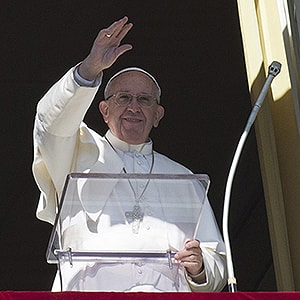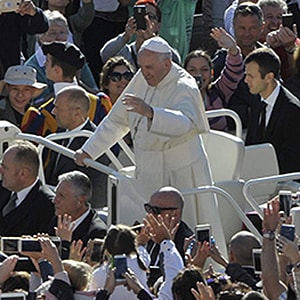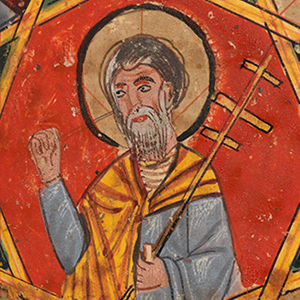
Progress of talks between Armenia and Azerbaijan spurs hope
By Lisa Zengarini
After 37 years of hostilities, Armenia and Azerbaijan could soon sign a peace deal finally settling their decades-long boundary dispute over the separatist region of High Karabakh.
On March 13 Armenian and Azerbaijani foreign ministers announced that they had reached an agreement in principle on the substantive terms of a peace treaty, though some issues still remain open.
Pope Francis' gratitude for steps towards peace
At the Angelus on Sunday, March 23, Pope Francis, who has constantly advocated for a peaceful solution to the conflict, welcomed the breakthrough, expressing his gratitude for the progress made in the South Caucasus. “May this be a sign of hope,” he prayed , “that other conflicts, too, may find a path to resolution through dialogue and goodwill.”
The two post-Soviet countries have been in conflict since the late 1980s when High Karabakh, a region in Azerbaijan at the time home to around 120,000 ethnic Armenians, broke away from Muslim-majority Azerbaijan with support from Armenia.
Since the collapse of the Soviet Union the two neighbouring nations have fought two major deadly wars over the contended region, in 1988-1994 and 2020, with several clashes in between.
A decades-long conflict that has displaced hundreds of thousands
The first outbreak of hostilities prompted mass expulsions about 500,000 mostly Muslim Azeris from Armenia and of 350,000 Armenians, who are majority Christian, from Azerbaijan.
The conflict flared again in September 2023, when a lightning 24-hour military offensive saw Azerbaijan regain total control of High Karabakh, resulting in the end of the self-proclaimed Armenian Republic of Artsakh and prompting over 70,000 of the region’s ethnic Armenian population to flee to Armenia within a week.
Pope Francis' repeated calls for dialogue
Throughout these developments, Pope Francis has consistently advocated for peace between Armenia and Azerbaijan, emphasizing dialogue and negotiation to resolve conflicts.
At the Angelus of 1 October, 2023, he expressed deep concern over the humanitarian crisis in High Karabakh, urging both States to engage in talks to restore peace and address the plight of displaced people.
During his annual 'State of the World' address to the Members of the Diplomatic Corps accredited to the Holy See, on Janyary 8, 2024 the Pope again called on Armenia and Azerbaijan to sign a peace treaty and underscored the importance of respecting international law, ensuring the rights of displaced persons to return home, and safeguarding places of worship.
17 points of discussion
Peace talks between Baku and Yerevan started in late summer 2024 and focused on 17 points. The main issue of the status of High Karabakh, seems to have been resolved since Armenian Prime Minister Nikol Pashinyan officially recognized Azerbaijani sovereignty over the area in September 2023.
In the latest round of talks Armenia finally accepted Azerbaijan’s proposals on two unresolved articles of the draft agreement regarding not deploying forces from third countries along the border and the mutual withdrawal of claims from international instances and the commitment not to take actions against each other.
Amendments to Armenian Constitution
The understanding has not yet addressed the long-standing issue of the amendments to the Armenian Constitution required by Azerbaijan to eliminate claims against its sovereignty and territorial. Although Armenia denies that its fundamental charter poses any threat to its neighbour, Armenian Prime Miniester Nikol Pashinyan recently announced the intention to adopt a new constitution. However, there is still no timetable for the process, which should include both parliamentary passage and a popular referendum.
The South Caucasus region has a great strategic importance both because of its location and because of its rich oil and natural gas resources, and it is therefore at the centre geopolitical interests of players such as Russia, Turkey, the United States, and the European Union.
Source: Vatican News and news agencies
Thank you for reading our article. You can keep up-to-date by subscribing to our daily newsletter. Just click here









